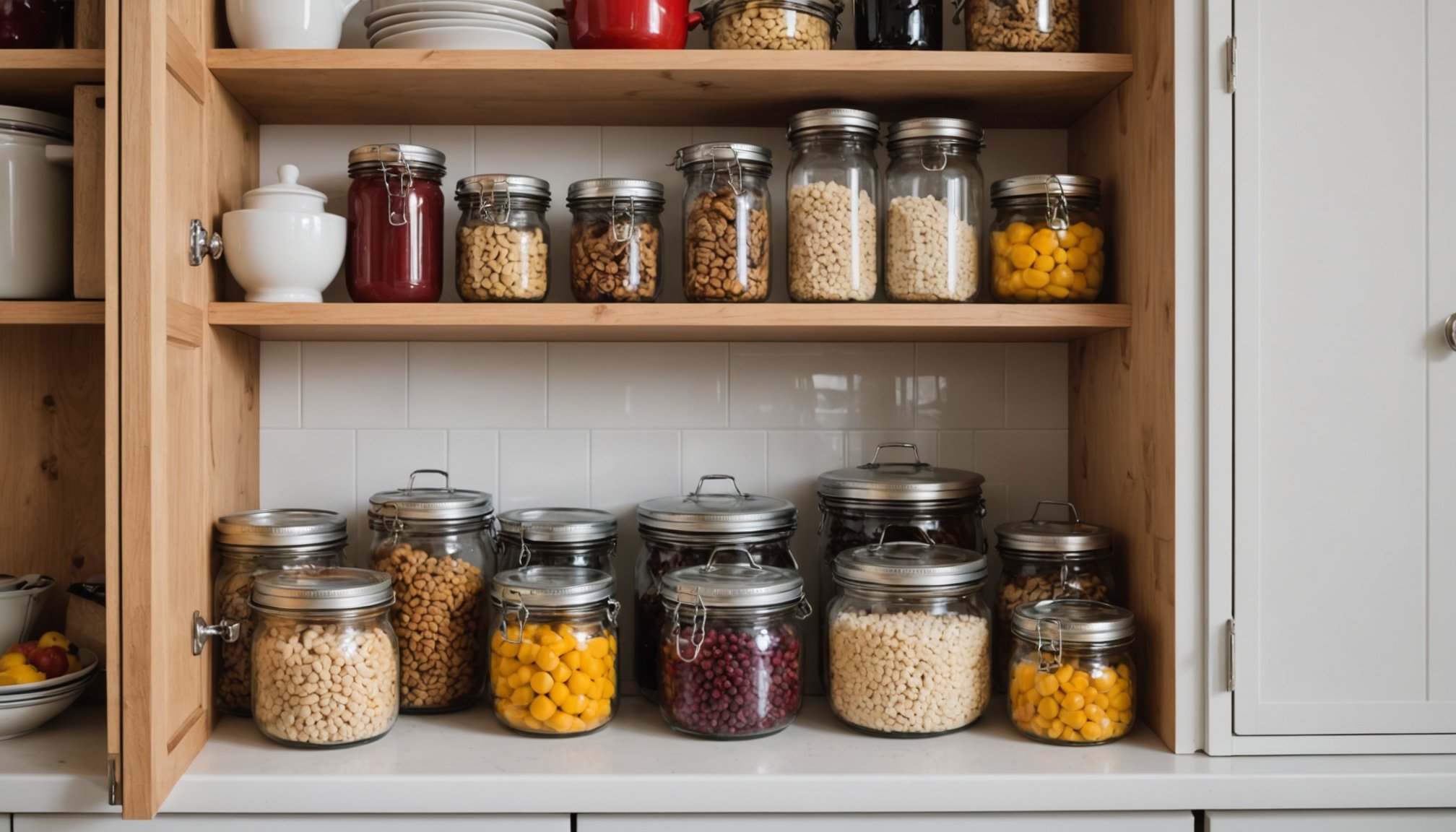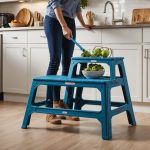Understanding Humidity and Its Impact on Kitchen Pantries
Effective humidity control is crucial for preserving food within a kitchen pantry. High humidity increases the likelihood of mold development and food spoilage. These conditions can significantly impact the pantry food items, especially perishable goods such as grains and flours. When the air is too moist, ingredients absorb excess moisture, reducing their shelf life and quality.
Ensuring optimal kitchen pantry conditions involves understanding the role humidity plays in food storage. An ideal environment inhibits fungal growth and maintains the integrity of dry goods. Hence, managing humidity is not only about food safety but also about extending preservation time.
Topic to read : The definitive handbook for selecting perfect rustic kitchen curtains for your uk home
Maintaining optimal humidity levels usually falls between 30-50%. This range prevents moisture absorption by pantry staples while averting excessive dryness that can also degrade certain items. Humidity control, therefore, significantly impacts food preservation, allowing households to reduce waste and maintain food quality over time.
To combat the effects of high humidity, homeowners should regularly monitor conditions and make necessary adjustments. Knowledge about how humidity affects pantries empowers individuals to implement strategies that effectively balance conditions, ensuring food remains fresh and safe for consumption.
H2 – Practical Strategies for Monitoring Humidity Levels
Managing humidity levels is pivotal for ensuring food safety and longevity in kitchen pantries. Employing effective tools like hygrometers can help monitor these levels accurately. Hygrometers are designed to measure the moisture content in the air, providing real-time data that assists in maintaining ideal conditions for pantry storage.
In the context of the UK, an optimal pantry humidity range typically rests between 30-50%. This range safeguards against excessive dampness that could lead to spoilage or mold, while also preventing excessive dryness, which can affect certain goods. Regular humidity monitoring is essential; checking levels weekly allows for timely adjustments.
There are various instruments available for household humidity control. Basic digital hygrometers offer precise measurements and are user-friendly, while smart humidity sensors can connect to your smartphone, providing continuous updates. Adjustments should be made promptly if the humidity deviates from the recommended range.
Understanding the nuances of humidity levels helps to enhance food safety practices within the home. By implementing a consistent monitoring routine, households can efficiently avoid common issues related to humidity fluctuations, thus preserving their food stock effectively over time.
Materials and Products for Humidity Control
For effective humidity control in kitchen pantries, leveraging the right materials is essential. Certain moisture absorbers like silica gel and activated charcoal are particularly effective in maintaining dry conditions. These materials work by absorbing excess moisture from the air, helping to stabilize humidity levels and protect pantry staples from spoilage.
Additionally, investing in moisture-resistant storage containers can significantly enhance pantry storage solutions. Containers with airtight seals prevent external humidity from affecting food items, thereby extending their shelf life. Many of these containers are designed to be both functional and space-efficient, ensuring seamless pantry organization.
There are several recommended products available in the UK market that cater to these needs. For instance, silica gel packets can be inexpensively placed in various pantry areas, while charcoal-based dehumidifiers offer a larger-scale solution. Both options are non-toxic and safe for use around food.
Incorporating these humidity control products is a proactive approach to pantry maintenance. They offer a practical, low-cost solution to minimise the impact of moisture, empowering households to maintain food preservation and quality efficiently over time.
Best Practices for Maintaining Humidity in UK Climates
The UK climate presents unique challenges for pantry management due to its often humid and varying weather. Effective humidity solutions involve maintaining proper airflow and making seasonal adjustments to keep food fresh.
One crucial aspect is organising pantries to enhance airflow. Ensure clear space around items for air circulation to minimise trapped moisture. Shelving should allow air exchange, helping to stabilise humidity levels.
Seasonal changes require adjustments. During winter, when heaters increase indoor dryness, consider using moisture absorbers sparingly and monitor more frequently. Summer months, with higher outdoor humidity, may necessitate moving food items to cooler areas.
Real-life examples illustrate successful strategies. A household in Cornwall reduced mold by installing a small vent fan. Another in Manchester improved storage by rotating items based on seasonal changes, like storing oats in airtight containers during wet months.
Integrating these best practices aids in managing pantries effectively across seasons, ensuring food safety. Through strategic planning and routine checks, UK households can navigate their climate’s challenges, maintaining optimal conditions for pantry preservation.
Common Challenges and Solutions in Pantry Humidity Control
One of the most prevalent pantry challenges is managing humidity-related issues like mold and food spoilage. Such problems arise when kitchen pantry conditions become excessively moist, providing ideal environments for mold growth. High humidity accelerates food deterioration, especially in staples like grains and spices.
To counter these concerns, experts recommend implementing effective humidity control methods. A key strategy is regular ventilation; promoting airflow can minimise trapped moisture, reducing the likelihood of mold formation. Installing vents or using fans can significantly enhance air circulation.
In addition, monitoring devices like hygrometers offer valuable insights into humidity levels, guiding timely interventions. Adjusting storage practices is another solution—placing goods in moisture-resistant storage containers with airtight seals inhibits external moisture exposure.
For long-term food preservation, moisture absorbers such as silica gel and activated charcoal are ideal. Placing these strategically within the pantry helps maintain stable conditions, preventing spoilage. Consistently applying these expert recommendations allows households to effectively manage humidity, ensuring their pantry remains in optimal condition, protecting their food stores from common humidity-related challenges.










